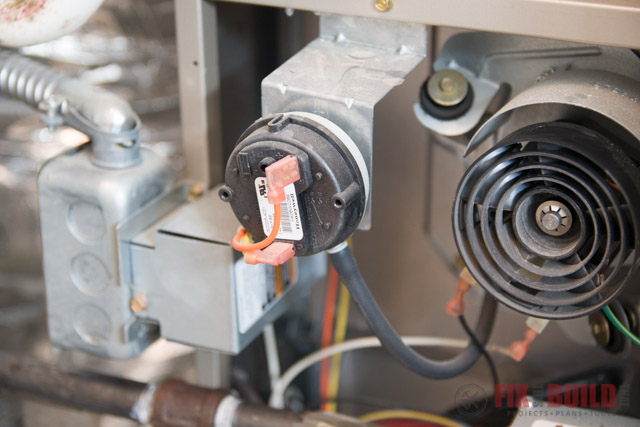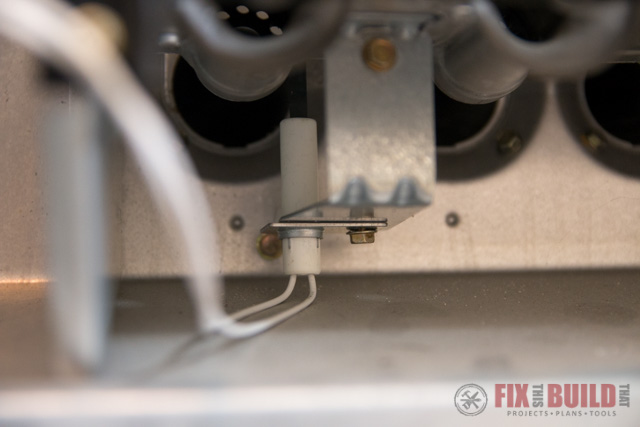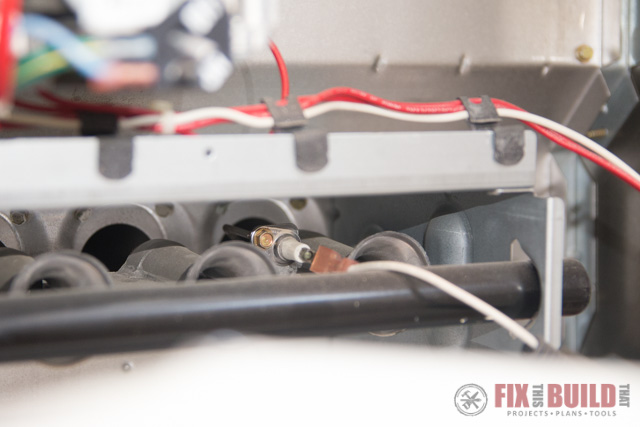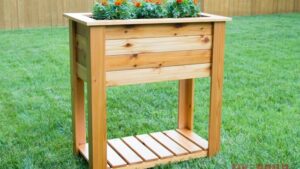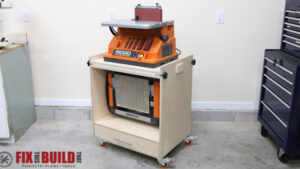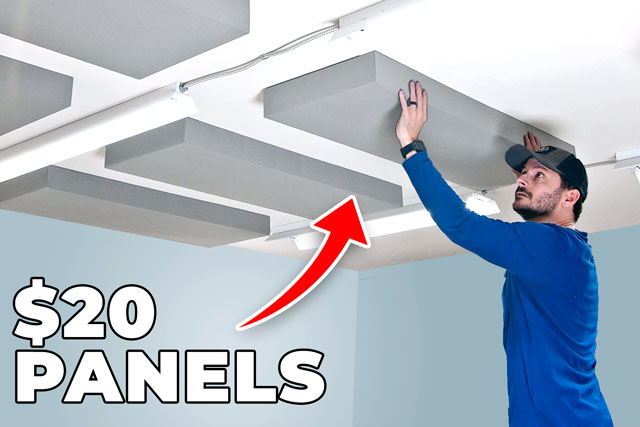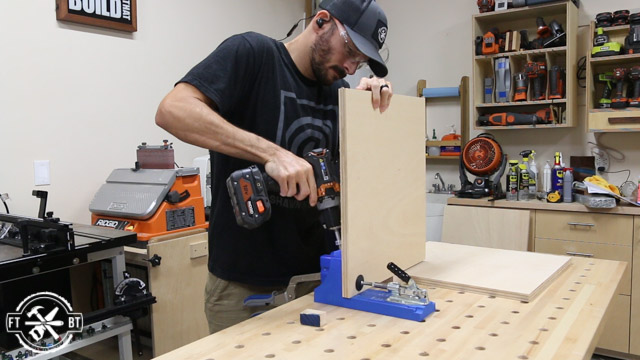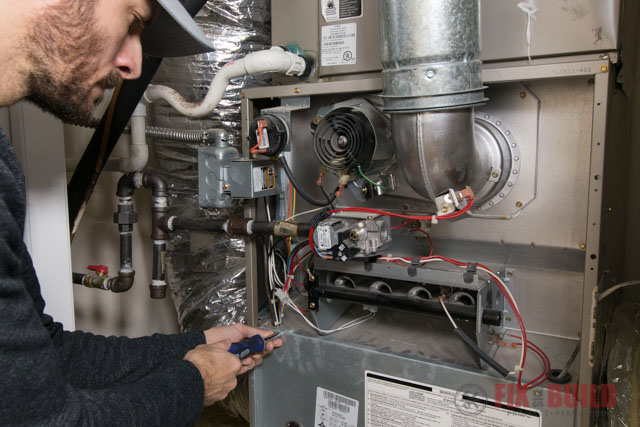
Today I’m going to do some furnace troubleshooting as the second part of my HVAC Basic Series. So if you’re stuck with a furnace not working, this is the post for you! If you’re also looking for tons of info about basic furnace maintenance, then you should check out my first post .
Thanks to Trane Residential for sponsoring this post! Trane is a world leader in providing reliable air conditioning and home comfort solutions, and their website has a bunch of great resources that you should check out as well, even if you don’t have a Trane system.

As a quick note: If your HVAC system is under warranty, be sure to follow any requirements to keep it in place.
I’m going to walk you through the stages of a gas forced air furnace and talk through some common problems and solutions. These are meant to be simple fixes you can do as a homeowner, with a basic process you can follow that isn’t too exhaustive to all the issues that could be going on with your furnace. If you’re still stuck after running through this list then it’s probably time to call a professional. You can use the Trane Comfort Specialist Locator page to find a technician who is on call for emergencies.
HVAC Basics: Furnace Troubleshooting Steps
- Thermostat Calls for Heat
- Inducer Motor Turns On
- Gas Ignites in Furnace
- Furnace Blows Hot Air Into Ducts
Step One: Thermostat Calls for Heat
The heating cycle all starts with the thermostat calling for heat. This can happen when you turn the system to HEAT and the ambient temp is lower than the heat setting or when the temperature drops one degree below the heat setting during normal operation.
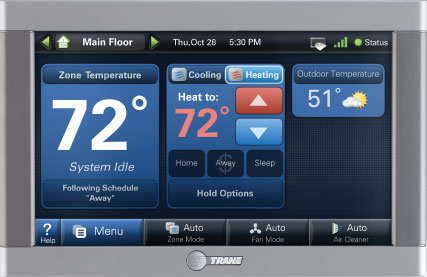
What Should Happen: Your thermostat should call for heat and a series of things start happening at your furnace. If you don’t hear a small motor kick in (this is the draft inducer motor) or if you just don’t hear anything you know there’s a problem at this point.
Common Problems:
- Furnace is not receiving power
- Thermostat is not sending the signal to the furnace
Common Solutions:
- Make sure that your furnace has power by checking your circuit breaker and any power shut off switches at the unit.

- Check to make sure the thermostat is set to HEAT and is at least one degree cooler than the ambient temp (go to 5 degrees cooler to be safe for the check). If your thermostat isn’t hard wired, you should swap the batteries and try again. And lastly you can remove the thermostat front cover and put it back on to make sure the connections are seated properly.
Step Two: Draft Inducer Motor Turns On
If you’ve eliminated the thermostat and power issues from the equation, then you can move on to the draft inducer motor. This is the motor that pulls air and gas into the combustion chamber and pushes the combustion exhaust gases from the house. Here’s what the draft inducer motor on my unit looks like.
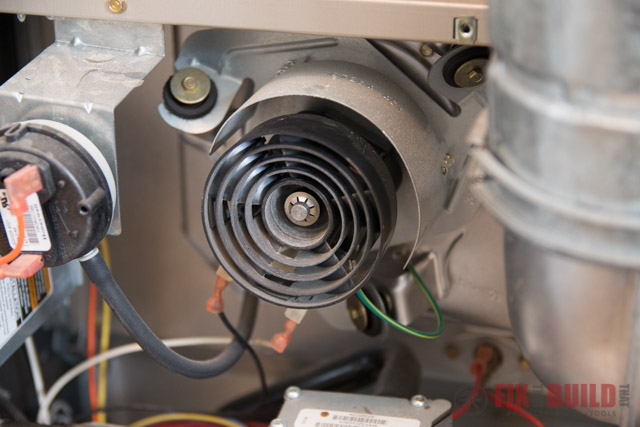
What Should Happen: The draft inducer motor should start to spin moving fresh air into the combustion chamber and exhausting air outside through a vent pipe.
Common Problems:
- Draft inducer motor is not working at all. You could hear a click and then nothing else happens.
- Motor starts spinning then turns off with nothing else happening. This could be a blocked or bad pressure switch.
- A spinning then stopping motor could also be a blocked exhaust pipe.
At this point we’re getting into multiple issues that could be the problem, so finding a solution gets a little trickier. But one feature that most furnaces have is a LED status and error code light. I showed you the motherboard when we cleaned the system during maintenance. The LED is usually on this motherboard and there is a small window that looks into it on my unit.

When everything is okay this light should be solid red as it is here. But there is a handy list of all the codes on the outside of the same panel. Your first place to look to narrow down the issue should be here. Then you can cross reference it with the error codes.

For example, if I get a code of 23 (2 short flashes followed by 3 long flashes) then it means the unit’s pressure switch didn’t open. Your furnace will likely be different, but it should be able to point you in the right direction.
Common Solutions:
- If the motor doesn’t come on at all then you could need a new motor. Probably time to call in a professional.
- If the motor comes on then goes off, check to see if you have a blocked or clogged combustion exhaust pipe.
- Another possible issue is a blocked or faulty pressure switch, it’s the brown circle with the black tubing going into it here. This is a less likely issue and I’d check the items in step 3 before messing with this and inspecting the tubing.

Step Three: Natural Gas Is Ignited
If your draft inducer motor is spinning properly and the combustion exhaust is free of blockages, then you should have gas delivered into the combustion chamber for ignition. There are a few things that can go wrong in this situation, but both are fairly easy fixes on most units. The issues and troubleshooting will be different depending on if you have a furnace with a pilot light or one with a hot surface ignitor.
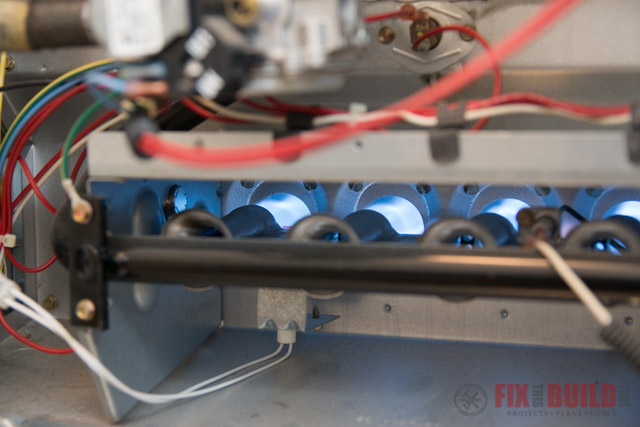
What Should Happen: The gas flows into the combustion chamber and is ignited by either the pilot light or the hot surface ignitor.
Furnaces with Pilot Lights
Furnaces with a pilot light have a small natural gas flame that is always lit and burning during heating season. It is similar to the pilot light in most gas water heaters.
Common Problems:
- The pilot light is not lit, the flame sensor will detect this and not allow the gas to be released into the combustion chamber.
- Pilot light is lit and the gas is not flowing.
Common Solutions:
- If the pilot light is out it will need to be lit. Follow your furnace owner’s manual for specific instructions on how to do this. If you can’t get the pilot light lit then check that the gas valve to the furnace is on and check other gas fueled appliances to see if gas is being delivered to them.
- Make sure pilot light switch is set to “ON” not “Pilot”.
- If the pilot light is lit and in the ON position you may have a dirty or bad flame sensor. This is a fairly easy fix and is something I’ve done in the past. The flame sensors are usually held in place by a single screw and attached to a wire that can be removed for cleaning (with fine grit sandpaper) or replacement. Make sure you turn the power off to the unit before trying to remove the flame sensor.
Furnace’s with Hot Surface Ignitors
Most newer furnaces will have a hot surface ignitor (or HSI) and this is what my furnace has. There is no steady gas flame, but a heating element glows red hot until it ignites the natural gas.
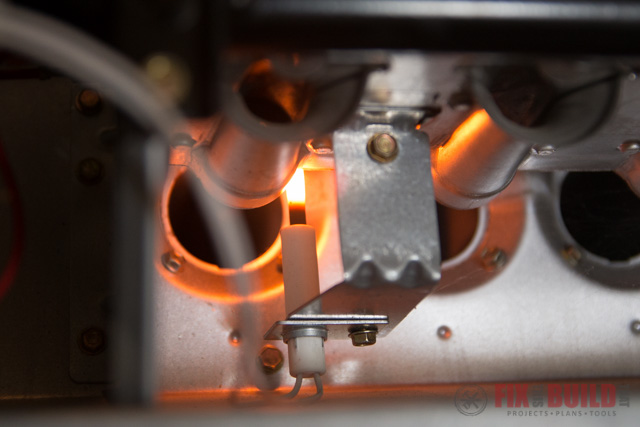 Common Problems:
Common Problems:
- HSI doesn’t energize (never changes color)
- HSI lights the gas and then moments later the gas shuts off. This could be a faulty or dirty flame sensor. In a HSI style furnace the flame sensors sense the heat from the ignited natural gas and it doesn’t, the furnace will shut off the gas flow.
Common Solutions:
- If the HSI is not energizing it may need to be replaced. Replacement will differ on each furnace but the main unit can be replaced easily with just one screw and a snap-on electrical connection. My HSI is very easy to locate and replace.

- If the flame sensor is bad or dirty it can be cleaned or replaced similar to a pilot light unit. In my furnace the flame sensor is on the opposite side of the burners directly in the flames when the burners are lit.


Step Four: Furnace Blows Hot Air Into Ducts
What Should Happen: The flames from the burners lit in step 3 heat up a heat exchanger inside the furnace. Then the Whole House motor starts circulating air through the furnace pulling it in through the return vents and over the heat exchanger which warms the air. The warm air is sent out through the heating vents to warm the house.
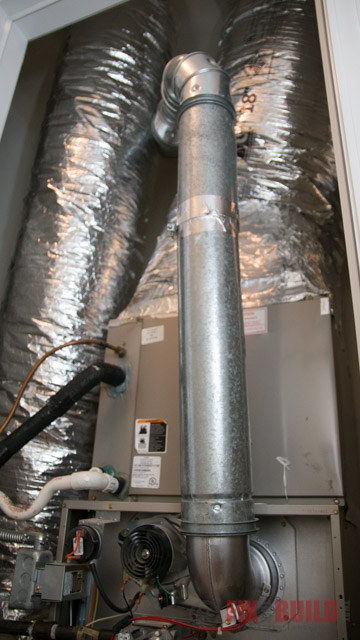
Common Problems:
- No air coming out of vents
- Warm air coming out of vents then stops
Common Solutions:
- Confirm that the blower motor is working. You can do this by switching your thermostat to FAN mode to ON. If the blower motor doesn’t turn on you may need a replacement and should call a professional.
- When the motor is running but no air is coming out you could have a blockage or disconnect in your ducting or registers. You should inspect your duct lines if they are visible and look for disconnects.
- If your furnace comes on then goes off it’s likely due to overheating. Overheating causes the unit to shut down to protect itself. The most common reason is clogged filters on the furnace. Changing your filters on a regular basis is one of the most important things you can do.
I hope this troubleshooting guide has helped you get your system back up and running. If you still can’t figure things out remember you can use the Trane Comfort Specialist Locator page to find a trained technician who is on call for emergencies.
And of course, if you are looking for a new system make sure to give Trane a look and see how they can meet your needs. They have a range of options and pricing to fit your needs – from the most efficient XC95M to the best value XB90 designed for the coldest climates. Trane’s very in-depth website will walk you through new systems along with a pricing guide and available tax credits for your new upgrade.
Stay tuned for more of my HVAC series and until then you can check out some of the other projects on my Home DIY projects page.
Trane Residential provided me with product and/or monetary compensation as a sponsor of this build. All opinions are my own and are not filtered by the sponsor.


